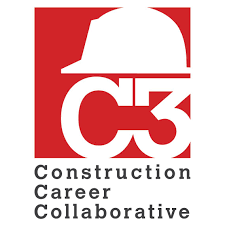 In my dream world where we can track and measure everything relevant to the success of our workforce, there would be a lengthy list of additional metrics to capture. But in reality, gathering just the raw data of how many laborers or entry-level workers were needed over the next 12 months, and whom we believed was the best resource to attract and prepare them for placement with C3 Accredited Employers would be an enormous leap forward for C3’s ability to impact our talent pipeline. But it isn't enough to just attract, we have to retain all those who come to us and help them to build careers in the industry.
In my dream world where we can track and measure everything relevant to the success of our workforce, there would be a lengthy list of additional metrics to capture. But in reality, gathering just the raw data of how many laborers or entry-level workers were needed over the next 12 months, and whom we believed was the best resource to attract and prepare them for placement with C3 Accredited Employers would be an enormous leap forward for C3’s ability to impact our talent pipeline. But it isn't enough to just attract, we have to retain all those who come to us and help them to build careers in the industry.
Attracting people to join the industry is just the first step of a two-step equation. Converting them to career employees who possess skills that create longevity for them in the industry is step two. At the basic level C3 tracks which organizations are equipped to upskill, reskill, and continuously improve their employees through our Craft Training Endorsement. However, we are not currently able to track retention of the workforce over the long term.
As we all know, construction is cyclical and requires companies to size up and down based on the ebb and flow of work, sometimes moving workers from one company to the next doing similar or even nearly identical work for a season. Sometimes they come back and other times they don’t. It is the fast-paced “slip seating” of people from a seat at one company to another that illustrates how important having all commercial contractors engaged in the development and retention of employees through training and career pathways becomes. If employees grow their skills at more than one company in their career it is imperative that all companies are providing continuous improvement training. I remember fondly a conversation that I had with Charlie Mogab before he retired from SpawGlass about how it was okay if someone else took his trained employees because at least they were safe, knew their trade, and would make a positive contribution at the next contractor.
It is a great philosophy to have, and we want our workforce to raise the bar for the industry with their skills. It does complicate the way we look at retention, however. When they stay in one company, we can easily see how long they have been in the industry and how far they have come. But what about when they move from company to company? Queue the lights and red carpet, C3 has a solution. We call it the C3 training database and while it does not currently help us to track who we are keeping and who is falling out of the ranks of the commercial construction industry, it can help us capture this data. As a matter of fact, we are working on fine-tuning what our database can track and making sure it is a viable resource for us to keep the positive story of C3 moving forward. We are looking at a variety of options for how we increase the items we track and know about each craft professional on our jobs and allow them to build their own training and work history in our systems. But we can’t do that without y’all as well. So join us on our design task force. If you have a passion for software development let me know.
But I digress, metrics will always be something we are examining at C3 and using to tell our story. We want you to be part of the group that moves us toward a more measurable impact on our mission. Are you tracking something you think we would want to know about – let us know. Are you interested in mapping out the metrics that matter for C3 – join our metrics community of practice. Want to just know more – book a call with me to chat. Together we can tell the story of how “C3 is doing good” in the industry and we can have the data to make it more than just a gut feeling.
Collaboratively,
Angela Robbins Taylor
C3 Executive Director


